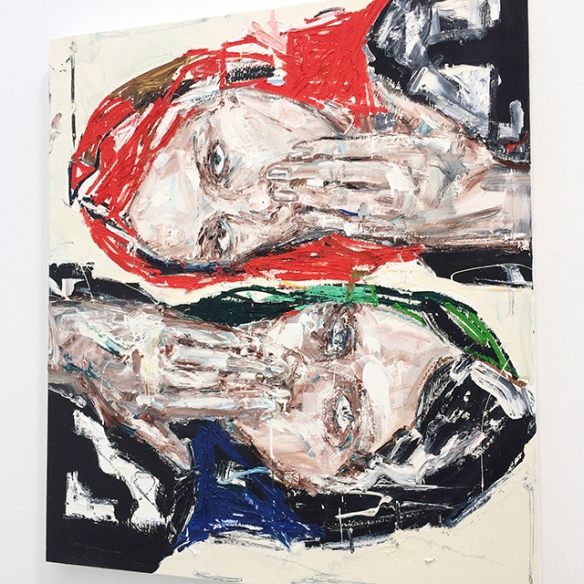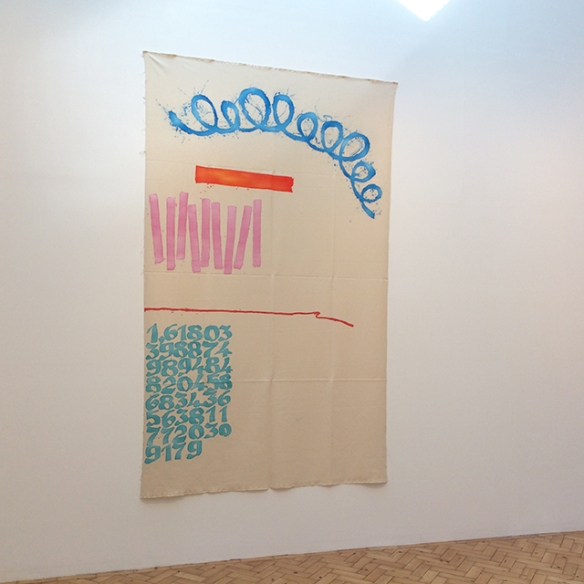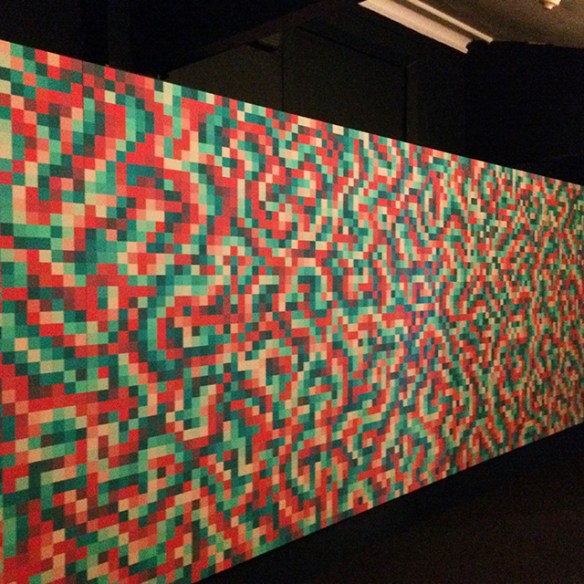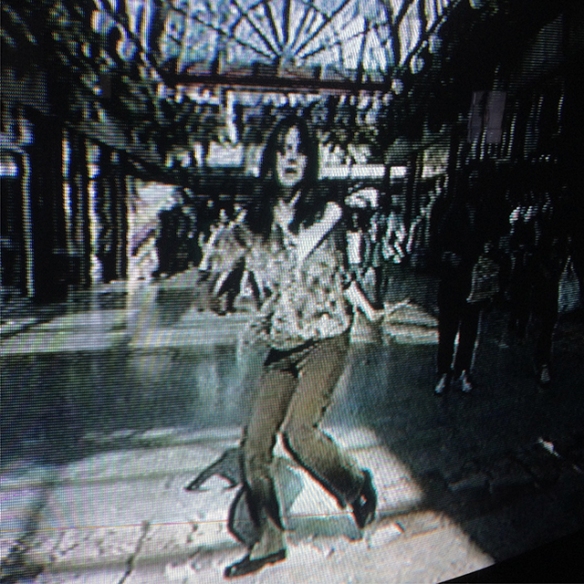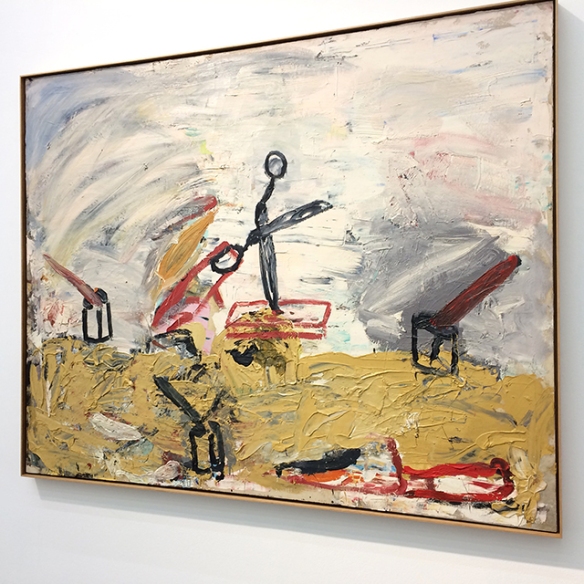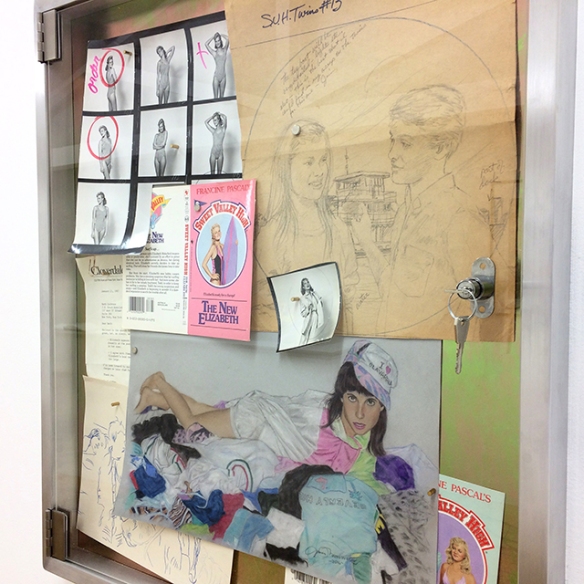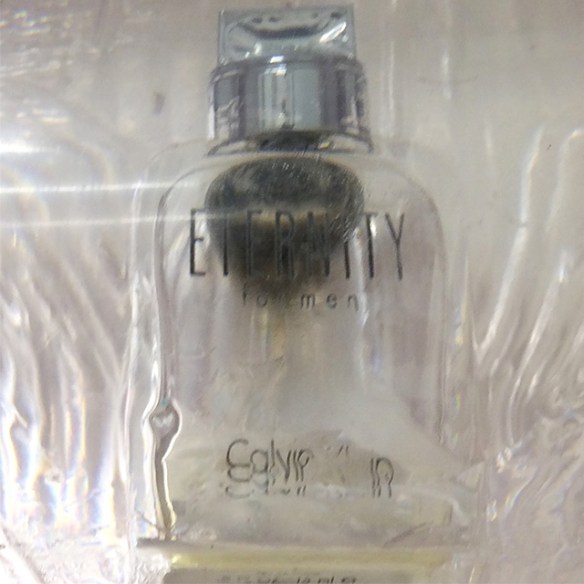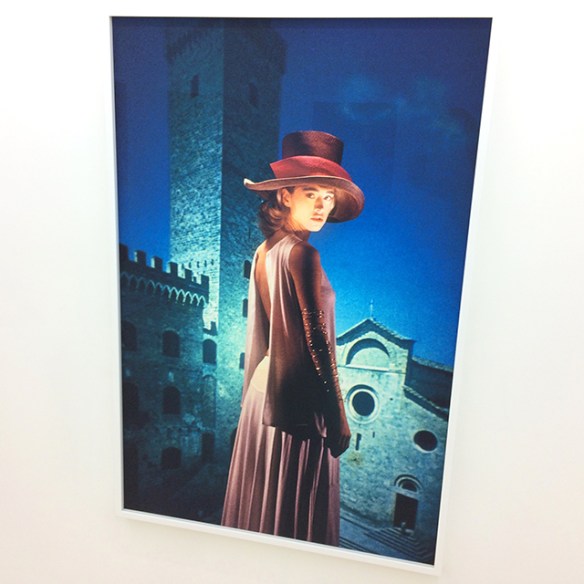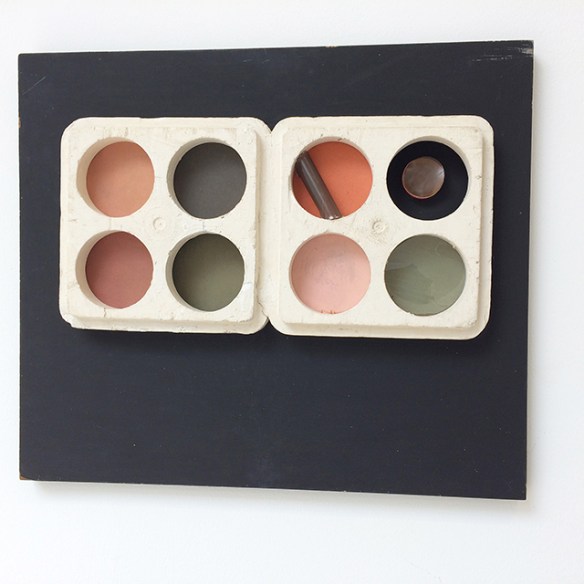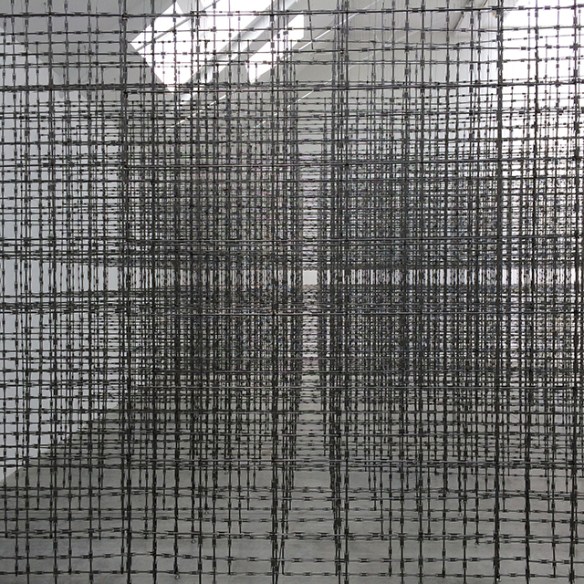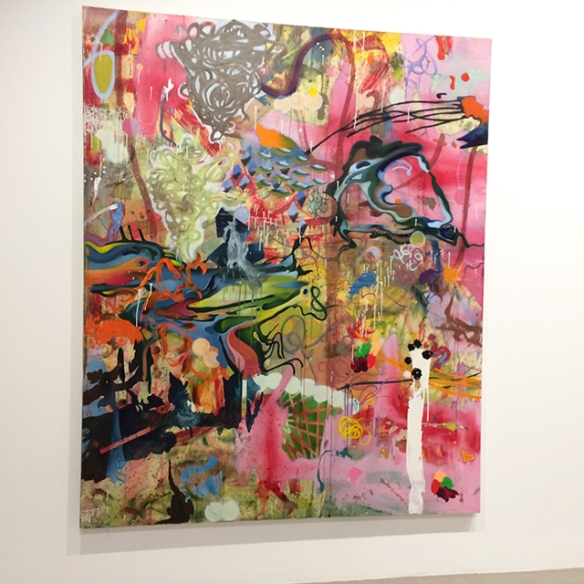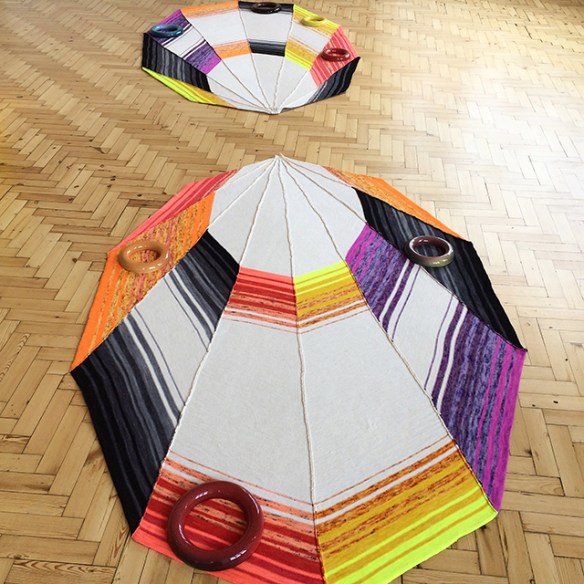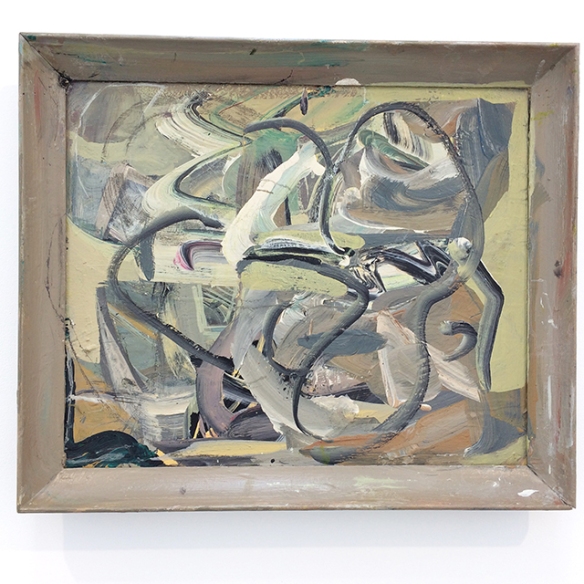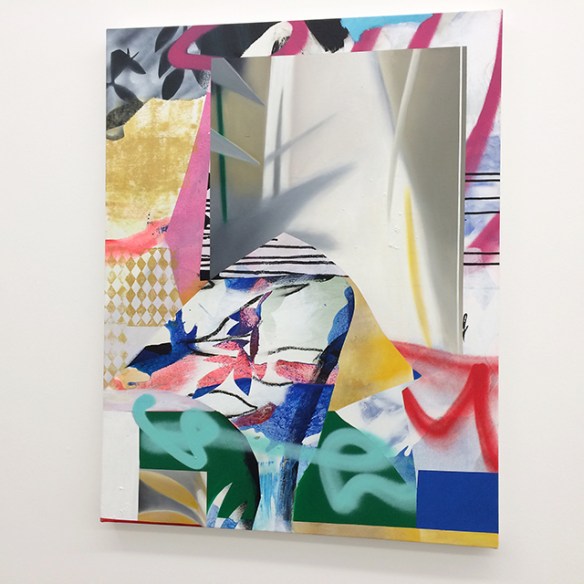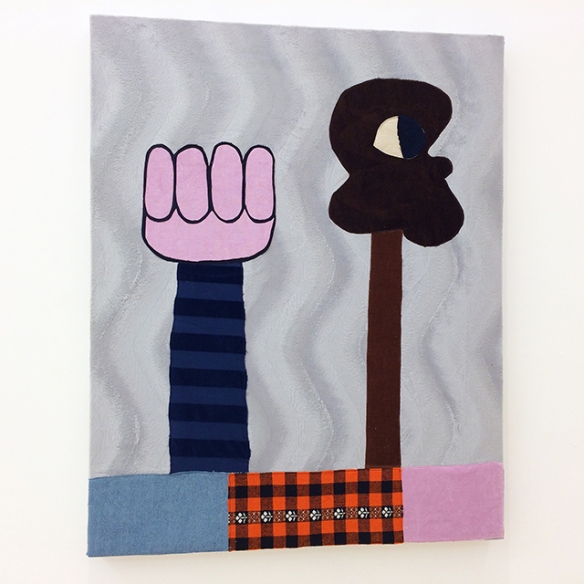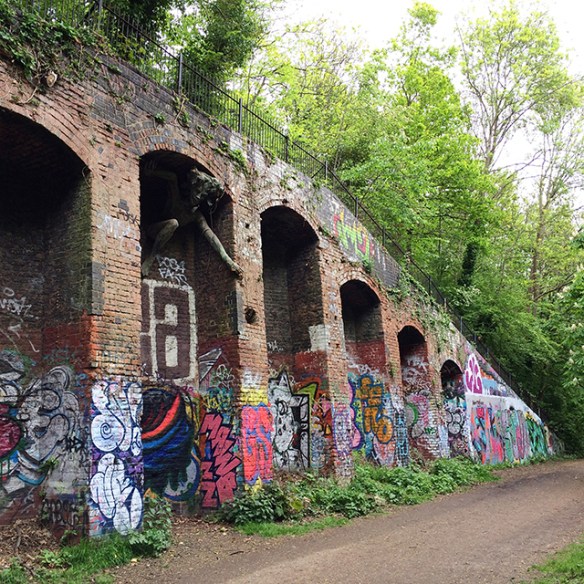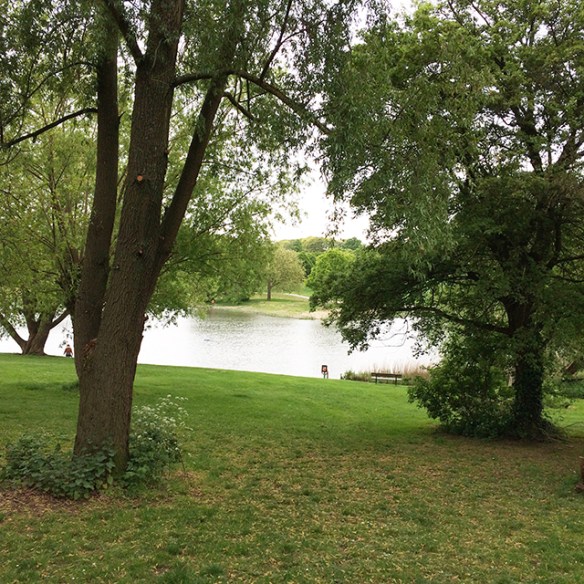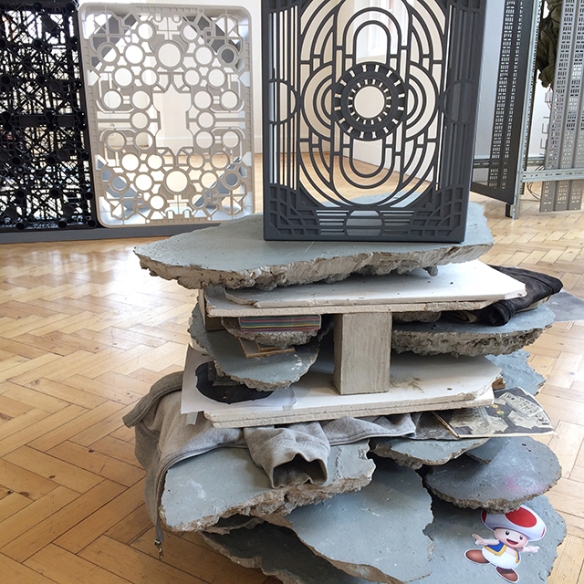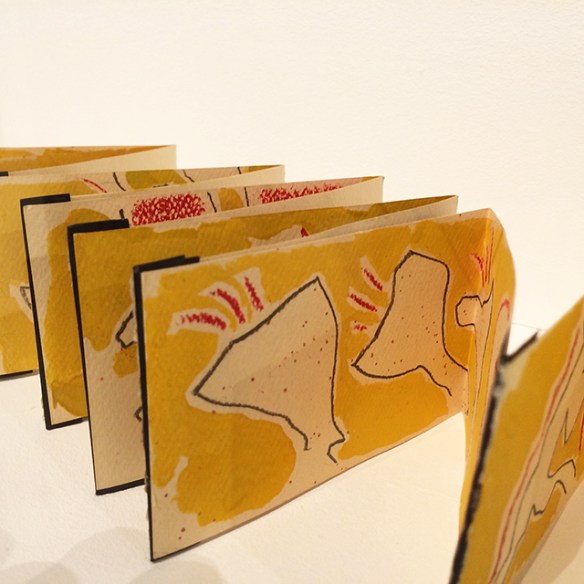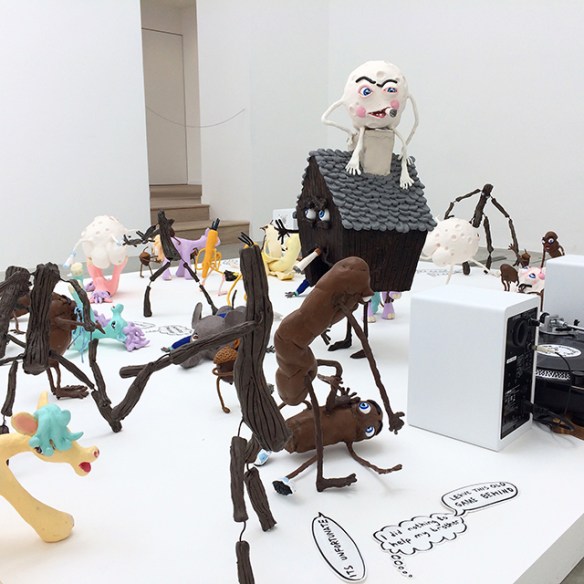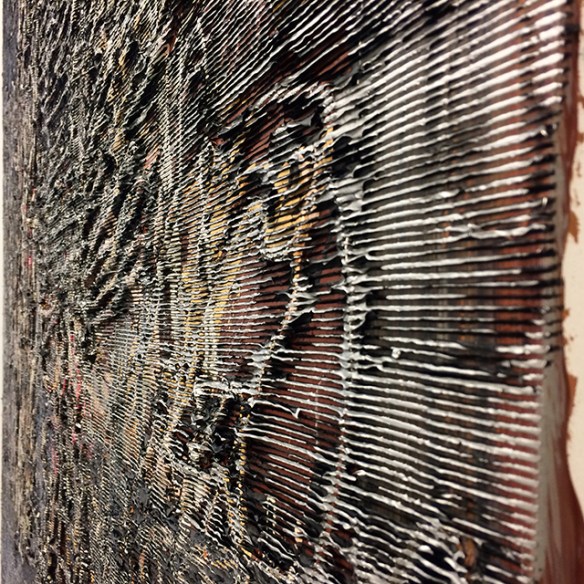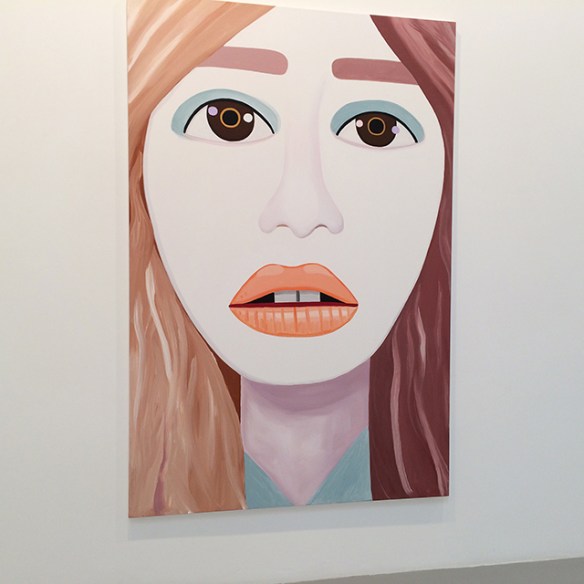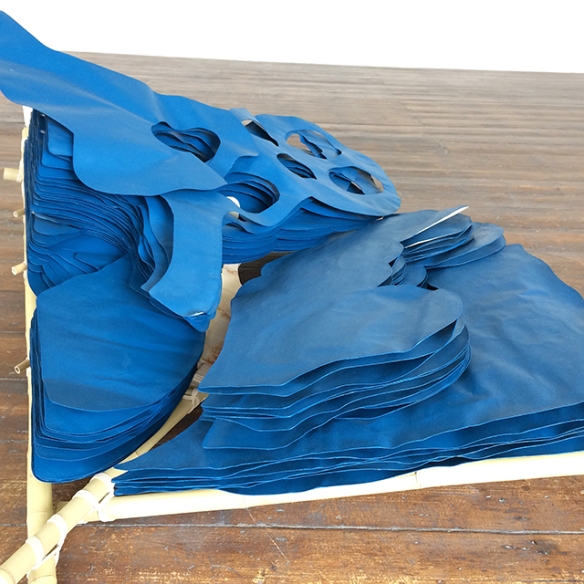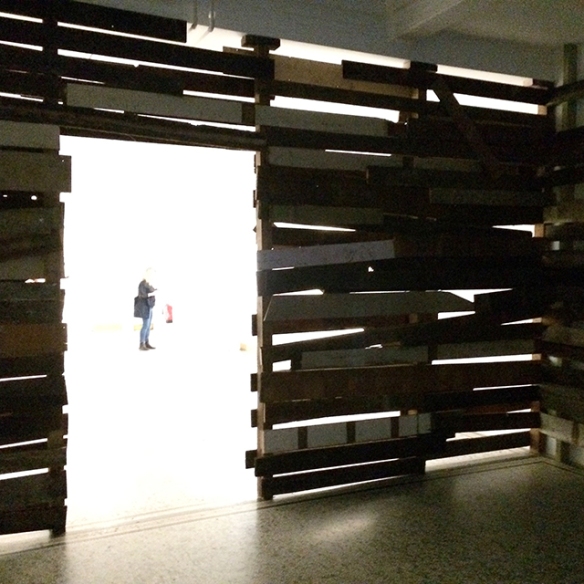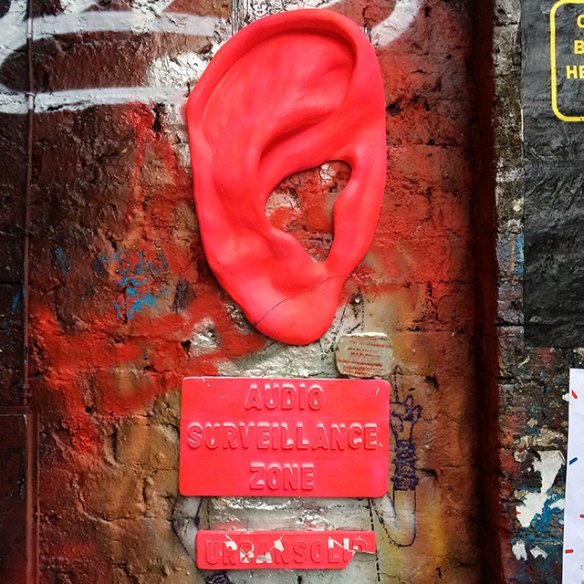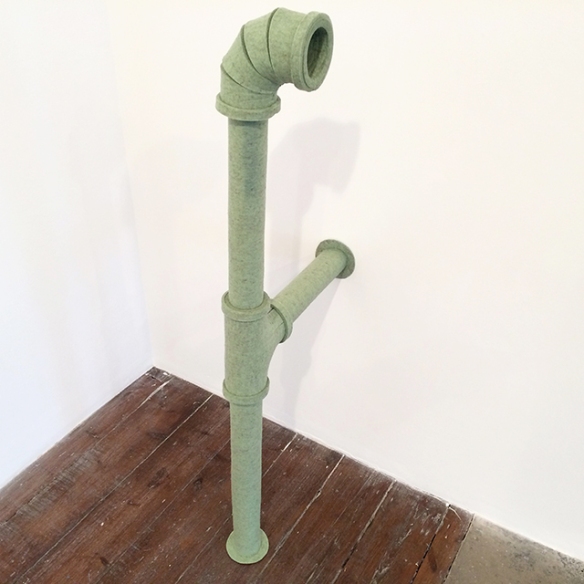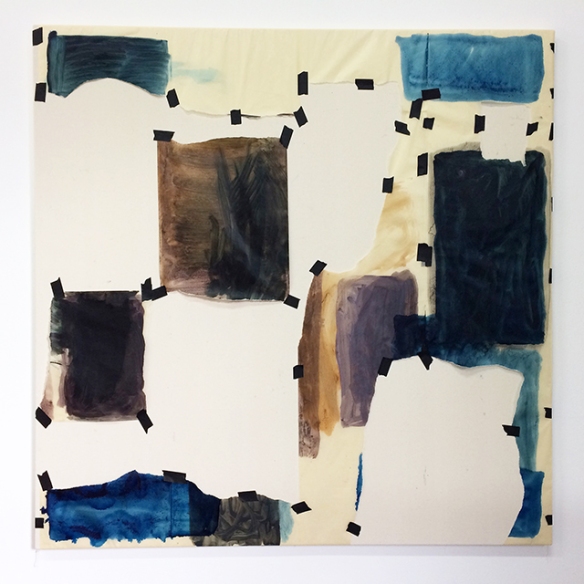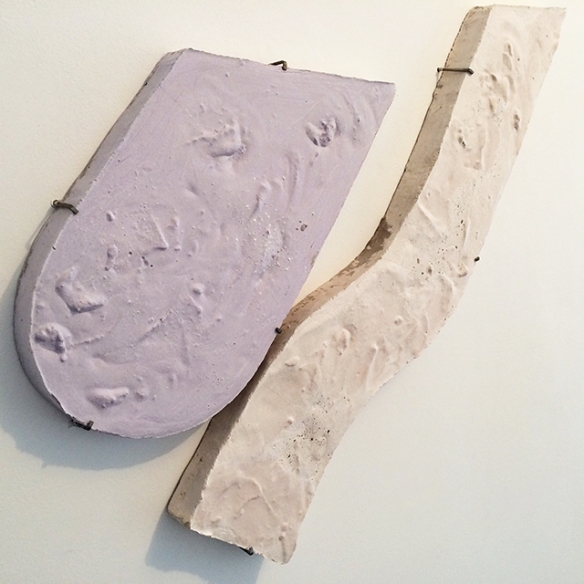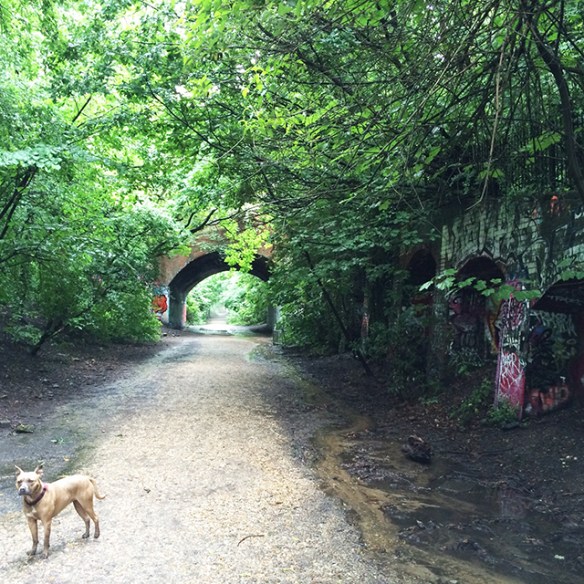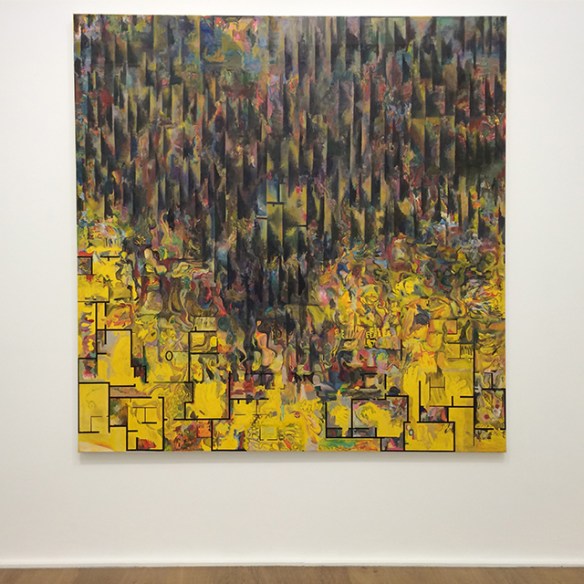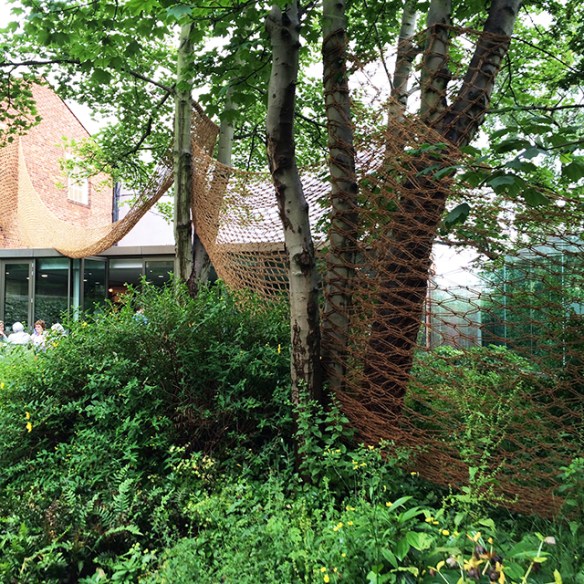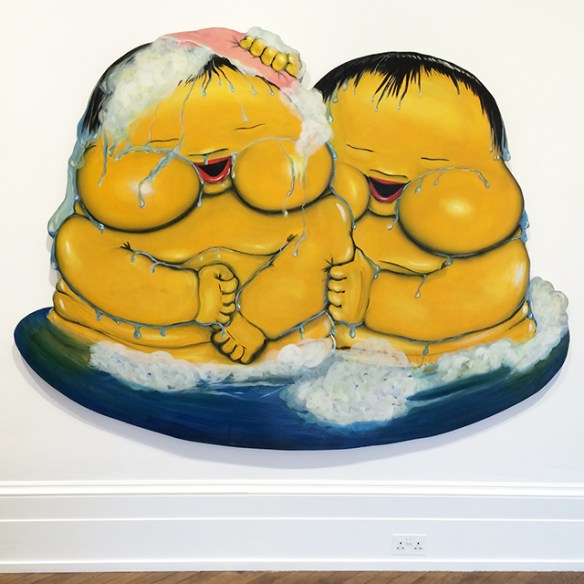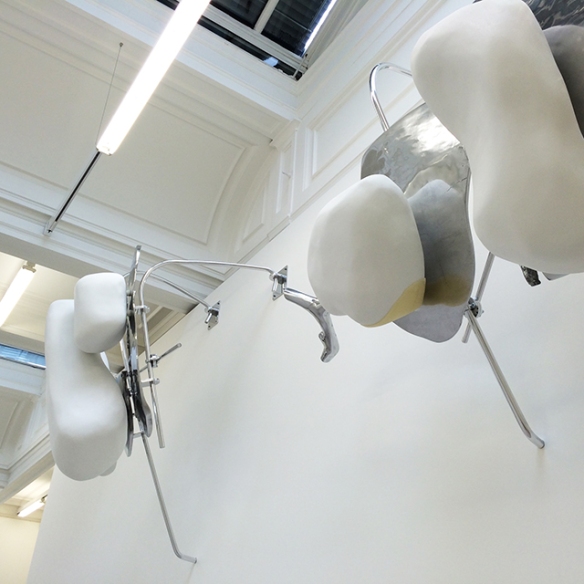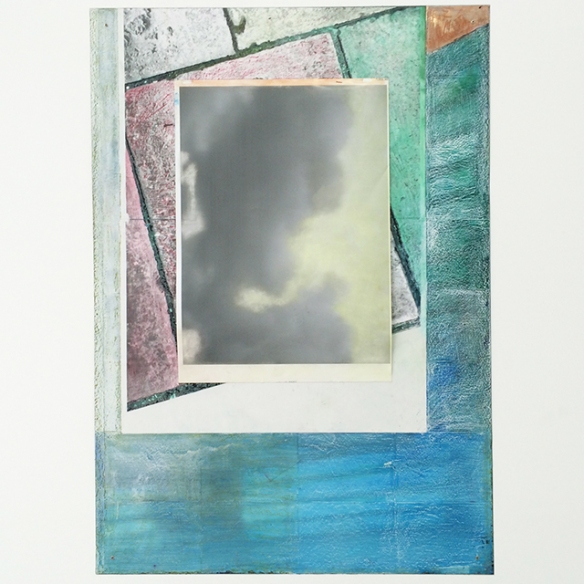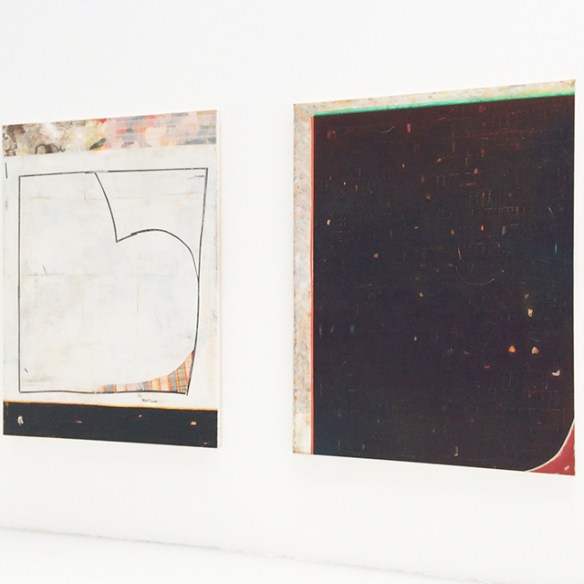The main feature of today’s run is the exceptionally long and attractive stretch between Camden Arts Centre in the west and The Approach Gallery in the east of London. Over half of this journey is off-road.
Rewind two hours and I am in Newport Street Gallery at Damien Hirst’s fifth show since opening the showcase space for his own collection. Like Jeff Koons from an earlier show Dan Colen, along with Hirst himself, are all on the books of Gagosian. Without really following the logic of an argument, this simple association suggests maybe there is some swapping of priceless art pieces between these giants of the contemporary scene. Colen is included in this accolade because he is a rising star and his limited edition of glass bottle and glass cig butts on sale at the entrance for £1600 looks good value on this account. Colen’s works are summarised as essentially self-portraits, by the blurb, and that seems right. For as well as the photo-realist self portrait with its cartoon-like addition, featured, the sculptural works all involve an activity by the artist, be it sticking chewing gum to a canvas or collecting rubbish from New York’s streets and then turning it into improvised paint brushes.
The run north is a long one and features the Zabludowicz collection and the elegant pub-style carpet by Rebecca Ackroyd, before arriving at Camden Arts Centre. Language is a feature of Christian Nyampeta’s show. Some words, he argues, such as philosophy cannot be translated easily into his native tongue of Rwanda. Far from being a deficiency of his country’s languages it is almost the opposite. Western thought has ignored an important concept, which he refers to as “Being”, or more specifically “good will to fellow humans”. In contrast, words from his own culture, he argues, carry these additional connotations as part of their overall meanings. In the other gallery Nathelie Du Pasquier continues her foray into the London consciousness after having recently shown at Pace, and in this gallery she has made a brightly coloured installation suggestive of industrialisation through the tripling of her motifs which is reminiscent of the three phase power supply that remains segregated from generator to power line to factory.
The intermission referred to at the beginning, the long run between west and east, begins with Hampstead Heath. The hard-won altitude gained at Hampstead is quickly surrendered as one approaches the three ponds and with Highgate church now looming above, it is this ascent that will then provide the fantastic views across London before one enters the trees and scrubland of Parkland walk. As mentioned in previous runs, Parkland Walk is a disused railway line and thankfully today it is on a downwards gradient and, with its array of bridges over low roads and ornate arches under the higher ones, one that is remarkably constant in its gradual descent.
In the east, three artists are showing at The Approach gallery, whilst outside the downstairs pub police-style tape causes momentary alarm as it surrounds the railings of the outer seating space, before revealing its joke on closer inspection, as a Halloween prop and not the site of major incident. Artworks feature motorways and smoke from three of the gallery’s strong list of regulars.
Nearby, the building formally inhabited by Wilkinson gallery has been taken over by Stuart Shave. Josh Kline has cast familiar objects in concrete and then smashed them up slightly, whilst other objects have been cut in half with some extremely effective cutting tool. Having achieved the precision of a smooth cut through the variety of materials making up consumer objects, the plastic of a knob and the steel of a fascia, the artist has then taped together two incongruous halves. A twin of different shape but similar function ensures that this part of the process looks impromptu and scruffy like some final ironic comment about the objects and perhaps also about the process of making art.
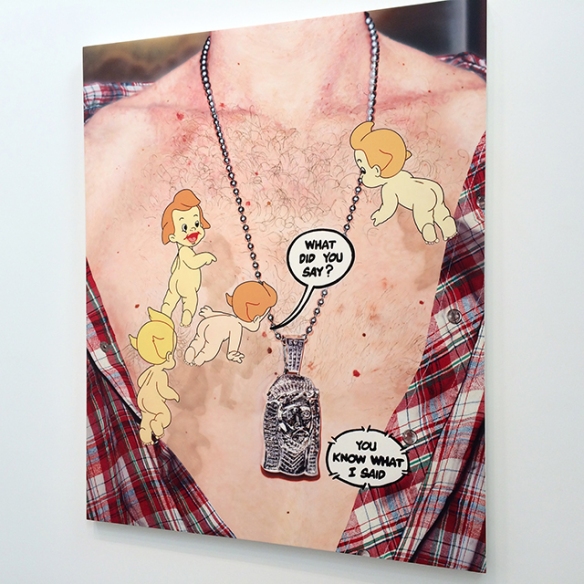
Dan Colen represented by Gagosian showing at Newport Street Gallery. Beautifully painted and a witty dialogue between cherub and a rather austere looking silver medallion.

Rebecca Ackroyd at Zabludowicz Collection with a carpet design that explores Britishness referencing, in particular, the pub carpet.
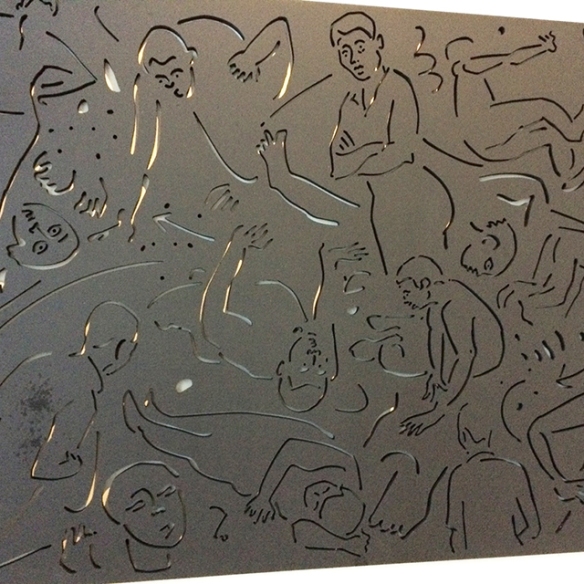
Christian Nyampeta at Camden Arts Centre with an installation and video work that explores the problem of translating western concepts such as philosophy into the language of the Rwandan people.

Nathalie Du Pasquier at Camden Arts Centre with bold images using isometric drawing, a graphic technique that doesn’t rely on perspective.
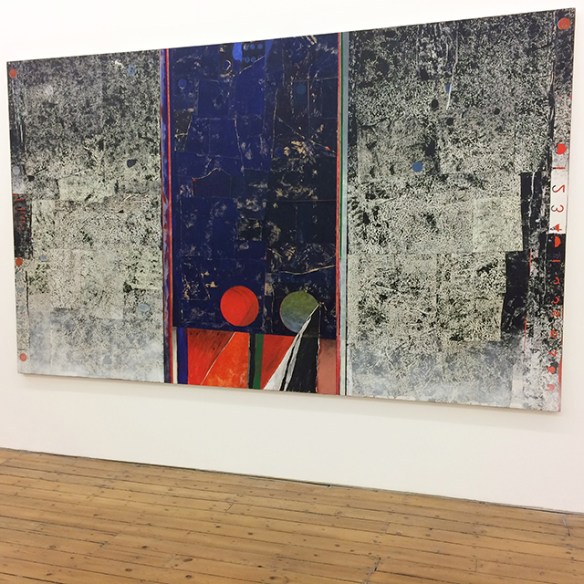
Sam Windett of The Approach with paintings incorporating collage based around the themes of roads and driving.
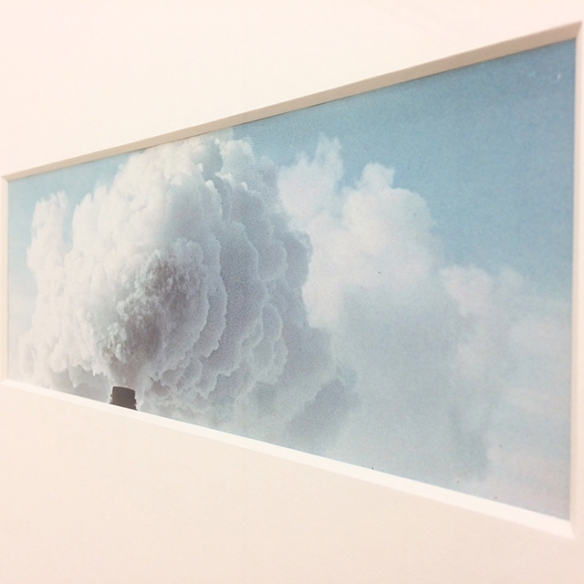
John Stezaker of The Approach with pictures of smoke without its cause, in other words heavily cropped chimneys.
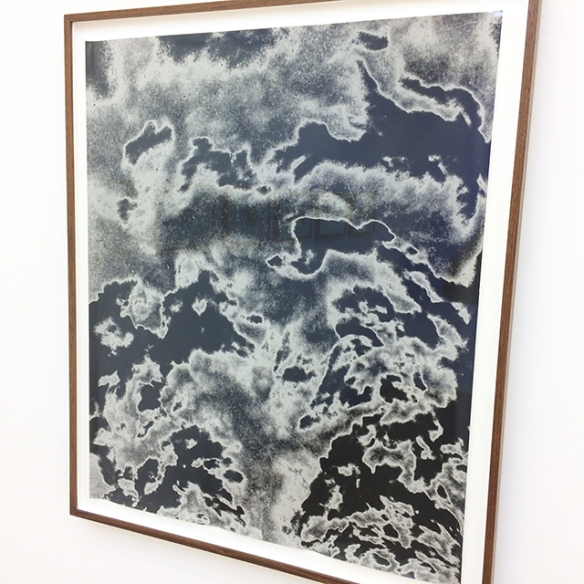
Lisa Oppenheim of The Approach with solarised smoke photographs.
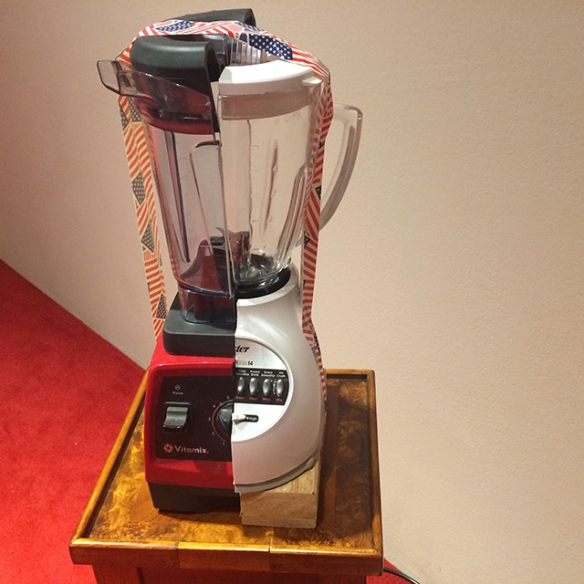
Josh Kline at Stuart Shave Modern Art with cut up and reassembled objects.
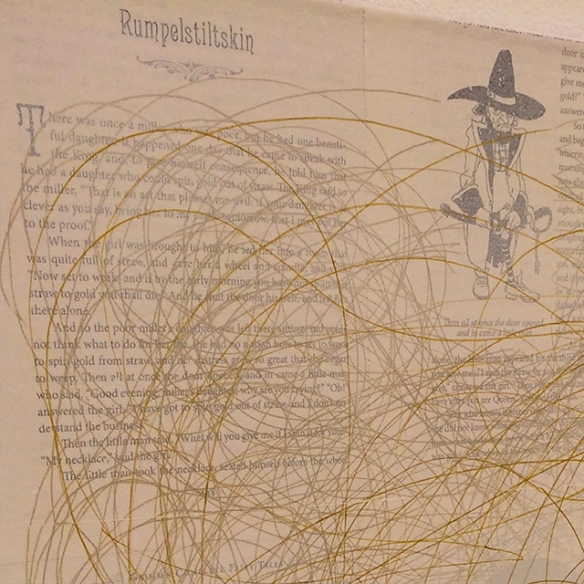
Tim Rollins and KOS of Maureen Paley with drawn-on texts.

 This week’s run has an extension panel to the map. It is via a lovely stretch of grassland called Parkland Walk. You enter at Highgate and exit at Finsbury Park with the illusion of having crossed from north west London to north east London in a matter of minutes. (In reality Highgate is not that far west, Finsbury Park is not that far East whilst the duration is nearer half an hour. This is the route of a disused tube line.
This week’s run has an extension panel to the map. It is via a lovely stretch of grassland called Parkland Walk. You enter at Highgate and exit at Finsbury Park with the illusion of having crossed from north west London to north east London in a matter of minutes. (In reality Highgate is not that far west, Finsbury Park is not that far East whilst the duration is nearer half an hour. This is the route of a disused tube line. Incidental mobile homes on a Peckham Street.
Incidental mobile homes on a Peckham Street. Anselm Kiefer at White Cube with interesting vitrines that use cables to create the vegetal forms plus there are a few complicated looking equations written on the glass.
Anselm Kiefer at White Cube with interesting vitrines that use cables to create the vegetal forms plus there are a few complicated looking equations written on the glass. Trix and Robert Haussmann at Herald Street with colourful remakes of an iconic furniture design. There is also some mirror effect on the bases.
Trix and Robert Haussmann at Herald Street with colourful remakes of an iconic furniture design. There is also some mirror effect on the bases. Patricia Tribe at Kate MacGarry with about twenty perfect brush strokes, and many rubbings out.
Patricia Tribe at Kate MacGarry with about twenty perfect brush strokes, and many rubbings out. Christodoulos Panayiotou of Rodeo Gallery at Camden Arts Centre. These electricity poles had a few attachments on still and smelt pleasantly of creosote.
Christodoulos Panayiotou of Rodeo Gallery at Camden Arts Centre. These electricity poles had a few attachments on still and smelt pleasantly of creosote. Leake Street.
Leake Street.
 Michael E Smith of Stuart Shave Modern Art with daily objects in unusual juxtapositions plus an unexpected theremin.
Michael E Smith of Stuart Shave Modern Art with daily objects in unusual juxtapositions plus an unexpected theremin.
